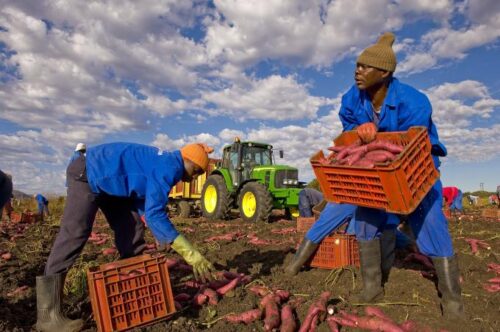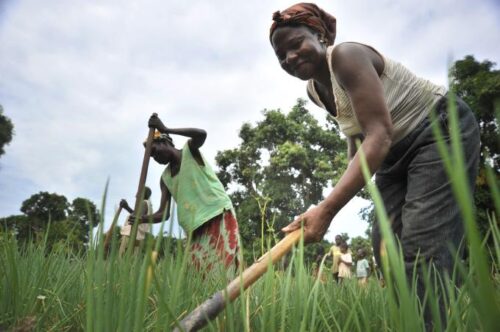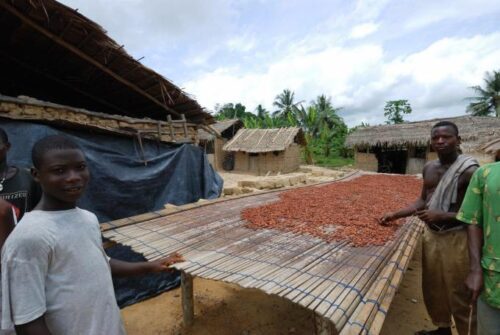Africa. The Great Challenge of Agriculture.

It is mostly farmers who guarantee the production of food, not only in African countries but throughout the world. Estimates by the International Fund for Agricultural Development (IFAD) speak of 33 million small farmers who contribute 70% of the food needs of the continent. The average size of a field is only 1.3 hectares.
In Southeast Africa 65% of the population depend on agriculture for their livelihood. In West and Central African countries, the primary sector represents 30-50% of GDP and is a source of income for 70-80% of the population. A crucial sector which, however, is still bringing up the rear of public spending. During the Dakar 2 summit, last January, the heads of state and government present renewed their intention to increase public spending on agriculture to 10%. Until 2020, only 4 nations respected the commitment, already expressed in the declarations of Maputo (2003) and Malabo (2014): Lesotho, Malawi, Ethiopia, and Benin.

The variety of climates allows for diversified crops. File Swm
African agriculture is often portrayed in terms of deprivation. Not very efficient and not very inclusive, according to the United Nations. In fact, African food systems export raw materials and experience high losses during collection, storage, and transport. According to the African Development Bank (AfDB), post-harvest losses for fruit and vegetables reach 35-50% and for cereals, they vary from 15 to 25%. Low efficiency also refers to poorly mechanized and non-digitalized agronomic techniques. According to IFAD, dependence on food imports in sub-Saharan Africa amounts to 35 billion dollars (in 2017). Fertilizers and fuel also come from abroad. According to the FAO, the sector tends to exclude women and young people, forcing the former into dependence and the latter into emigration, to the city or abroad. To this must be added the poor access to land, credit, and markets.
Very few farmers have land titles. Interest rates for loans are high and very few have a bank account. The sale of products is complicated by infrastructure shortcomings: bad roads, high transport costs, corruption, and lack of electricity.

Very few farmers have land titles. File © FAO/Riccardo Gangale
Many international trade agreements also favour imported goods over locally produced ones. Monocultures destined for export, standardized production, and the green revolution: this is the footprint of agro-industry in Africa. Reservoirs of raw materials to be exported, destined for large-scale distribution are: cocoa for the Ivory Coast and Ghana; cotton in Benin; tea and coffee in Kenya; and vanilla in Madagascar.
When African agriculture is described positively, it is seen as an investment opportunity. The variety of climates allows for diversified crops; an abundance of arable land and natural resources; and a pooling of the workforce. On paper, the value projections of the agribusiness sector foresee 1 trillion dollars by 2030. In this context, the recipes of the agricultural industry for the development of the sector have not changed. They profess biodiversity but still offer monocultures. They turn to the domestic market but then the bulk is exported. They promise processing industries but invest in raw materials.

According to OECD, FAO, and the World Bank, the top ten exports include cocoa, cashews, tobacco, coffee, oranges, cotton, sesame, tea, cocoa mass, and grapes. File Swm
According to data released by OECD, FAO, and the World Bank, the top ten exports include: cocoa, cashews, tobacco, coffee, oranges, cotton, sesame, tea, cocoa mass, and grapes. Among these, the only processed product is cocoa paste, the others are raw materials destined for foreign industries. In international forums designed to attract investors, the goal is clear: to boost a sector that promises high growth margins. The tools to achieve it are: improved seeds capable of responding to climate change; mechanization; digitization (from apps to robotization, up to e-commerce); fertilizers; and other inputs to increase land productivity. The view of the supporters of peasant agriculture is different. Agricultural transformation is achieved through the diversification of production systems, the promotion of agroecology and agroforestry, water and soil management, the protection of peasant seeds, the autonomy of producers, the creation of local and regional markets, the recognition of land titles, and the strengthening of peasant organizations. (Open Photo: 123rf)
Marta Gatti



